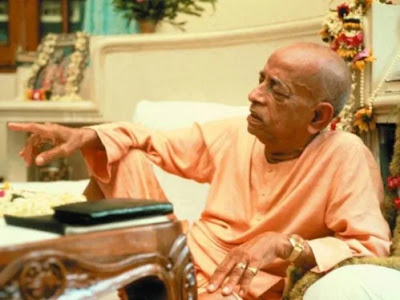Acarya 1-3. - The same conclusion
„They
are mahājanas. So we have to follow Prahlāda Mahārāja. He is our guru,
pūrva-ācārya. Nārada is pūrva-ācārya. He is disciple of Nārada. Therefore he is
ācārya, and his disciplic succession... There are sampradāyas:
Brahma-sampradāya, Kaumāra-sampradāya... Anyone who is bona fide ācārya, he can
create his own disciplic succession, but one disciplic succession and the other
disciplic—they are not different. They are of the same conclusion. The Vaiṣṇava
ācāryas, just like our Rāmānujācārya, Madhvācārya, and Nimbārka, and who that?
Rudra-sampradāya? Viṣṇu Svāmī. They are all of the same movement.
Ārādhyo-bhagavān vrajeśa-tanayaḥ, kṛṣṇas tu bhagavān svayam [SB 1.3.28]. That
is their conclusion. There is no different conclusion. Although they have got
varieties of methods—śuddhādvaita, dvaitādvaita, vaśiṣṭādvaita, like that—they
present the same philosophy in clear way. And Caitanya Mahāprabhu presented the
same philosophy, that acintya-bhedābheda. That is ācārya. Ācārya gives some way
for simple understanding. The same conclusion, but according to the time,
circumstances, they give a very easy method to understand. That is ācārya.
Ācārya is following strictly the previous ācārya, but according to the
circumstances, he may make little changes. That is... That change is not change
from the original idea. No.”
(Lecture:
Śrīmad-Bhāgavatam 7.9.12—Māyāpur, February 19, 1976)
.jfif)



Comments
Post a Comment